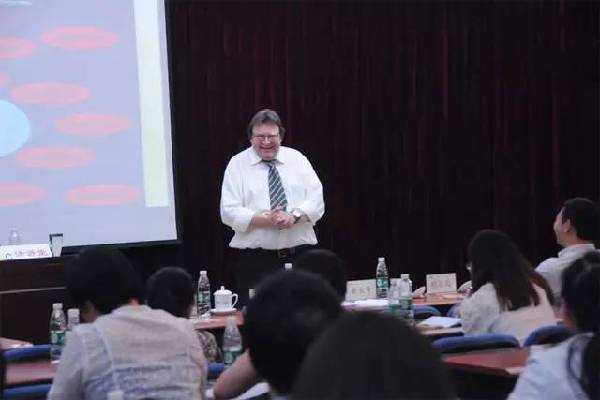 |
|
Professor Frans De Laet at a lecture held last Friday by the China International Publishing Group in Beijing. [Courtesy of Translators Association of China] |
Both translators and interpreters alike should better understand cultural diversity and prepare for ever-changing social demands, said Frans De Laet, a renowned translator, interpreter and professor from Brussels, Belgium, at a lecture held last Friday by the China International Publishing Group in Beijing.
When tracing the history of modern translation, which started at the end of the 18th century following the first Industrial Revolution, Laet, the Secretary General of the International Federations of Translators and an associate editor with Babel, an international journal of translation, believes the exchange among countries gradually and slowly changed the landscape of translation.
Evolving from the booming industrialization era, the demand for efficient translations, such as simultaneous interpreting had been created at the same time when war criminals from WWII stood trial after the foundation of United Nations in 1945.
"We need, by all means, to avoid disastrous wars," professor Laet said.
Along with constant social transformation, the interpreting service has expanded from conferences to other aspects of the world, which gave birth to community interpreting.
"Community interpreting has become an important form of interpreting… with the interpreters who can help in courts, hospitals and administrations," the professor explained.
What if a kid was hit by a car and was sent to a hospital where the communication in Dutch was rough? It would be clear that an interpreter was needed, Laet continued.
The professor pointed out three characteristics of community interpreting, understood as a translational process with no prepared texts, interpreting with the purpose of handling problems and the depressed feelings and neutral stance of the interpreters.
The context of community interpreting is usually unstructured, emotional and dialectical for problems which may include administrative ignorance, medical urgency, financial aid and theft.
"All this will be reflected in your language," the professor said.
However, the interpreter's feelings should be neutral which means they should show no streaks of sympathy, aversion, grief, disagreement or defense, he continued.
In addition to community interpreting, Laet suggested that translators and interpreters understand and respect cultural diversity when they are shuttling between different languages.
"The color of red may not have the same feeling among different countries. In Belgium for example, it means creation," the professor said. So, he advised translators to check who is going to read and follow their audience's common practice when working on translation and interpreting.
For example, he said, English is usually read from left to right, while, in Arabic countries they are read in a reversed direction from right to left.
"Without being aware, you'll have a very bad publication," he said, "We have to better understand cultural diversity [in this respect]."
The lecture also touched on the topics of translation and interpreting for people with impaired physical conditions, the application of new technologies, the important role of speakers' body gestures and the acceleration of translation speeds.
"To interpret at a very, very high speed, [the translators and interpreters] should not look at words but look at senses," he said.